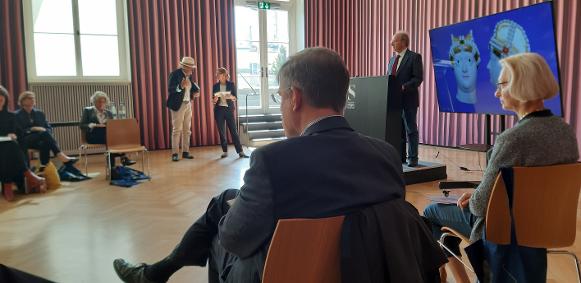News from the Städelmuseum and Liebieghaus Skulpturensammlung, Frankfurt am Main.
A workshop on the subject, "Colour matters. Polychromy of Ancient Greek and Roman Sculpture as Research Subject in Archaeology and Philology" was held on Friday 24th September 2021, to coincide with the closing of the exhibition ‘Bunte Götter – the Golden Edition’ at the Liebieghaus. See the workshop programme here.
Jan Stubbe Østergaard has kindly put together some notes on his impressions of the meeting.
